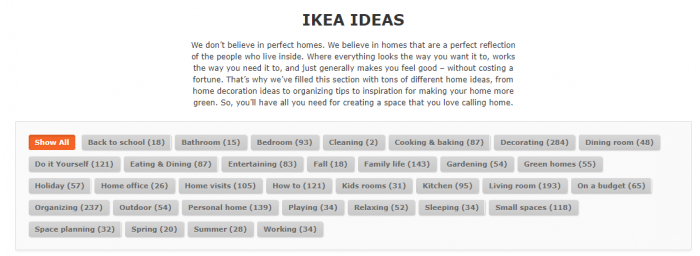Are you planning to start your own business or already have a startup with no clear and unique branding? If you are, be wary of people who only recommend creating a logo and other graphics for branding. Why?
Because in 2019, such brand attributes as a logo and appealing graphics don’t entirely make a brand. To make people recognize your startup and fall in love with it, you have to provide a unique experience that people can’t get with other brands.
A recognized online presence and experience are the two pillars of modern startup branding. They’re essential for kick-starting your brand and making it stand out in the sea of others.
But how does one deliver that brand presence and experience in a way that makes a lasting impression on customers and persuade them to connect with you? Recent surveys suggest that 42 percent of customers don’t trust brands and 48 percent suggest that brands need a strong identity.
With such a discouraging situation, you may find that branding your new business is a daunting project, but with hard work and determination, you can do it right and make a lot of people fall in love with your company.
1. Mission, Vision, and Brand Values Drive You Forward
Many startups don’t realize the importance of having a mission, vision, and values in driving them forward, so they don’t push the boundaries hard enough when it comes to using them as a roadmap to reaching success. As a result, they develop a too conceptual or vague vision and mission that fails to contribute to their competitiveness and define the unique value and proposition.
Here’s what you need to keep in mind to avoid that.
A Brand Vision Should Project
Remember, a vision for your brand won’t work if it’s not forward-looking, which is ensured by the following:
- Goal. Define the goal by answering this question: “What purpose does my startup have in terms of changing this world for the better?”
- Ambition. Essentially, it’s the hope you have for the world.
- Vision. This is the strategy of how your startup intends to change the world for their customers.
Need a good example? Take a look at IKEA’s vision statement:
At IKEA our vision is to create a better everyday life for many people. Our business idea supports this vision by offering a wide range of well-designed, functional home furnishing products at prices so low that as many people as possible will be able to afford them.
Why is it good?
- It clearly defines how the brand intends to make their customers’ lives better.
- It identifies the means that help the brand to achieve this vision.
- It determines the ambition, i.e. the hope for the world.
A Brand Mission Should Excite You to Move Forward
Often, brands fail to make their mission exciting enough to drive them to achieve more. To avoid that, you need to create a mission that focuses on the goal that you and your staff are here to accomplish.
But don’t forget about how you intend to do that! Your startup may have the best mission in the world, but if you think too broadly or aim for an impossible goal, you’re highly likely to end up with a mission that’s confusing and lacks a connection with your brand vision and values.
It goes without saying that a mission like this won’t excite you to move forward.
Here’s an example for inspiration, this time from Starbucks:
Our mission: to inspire and nurture the human spirit – one person, one cup and one neighborhood at a time.
Although the statement starts with a rather difficult goal, it ends with a clear way of how the company intends to achieve it, which is pretty much possible and enjoyable.
Brand Values Should Help to Stand Out
“The values that your brand stands for are the heart of your competitive value,” says a digital marketer from PickWriters. “If a person identifies with your values and thinks that they’re meaningful, he or she is much more likely to connect with you.”
To make more people feel this way, your brand values should be unique, distinctive, and describe qualities that you would like to see in people in their approach to work. In this sense, one could say that brand values should focus on what you think makes your brand stand out and more competitive.
Here’s a list of IKEA’s values that help them to be unique in their industry (as listed on their official website):
- Leadership by example
- Constant desire for renewal
- Togetherness and enthusiasm
- Cost-consciousness
- Striving to meet reality
- Humbleness and willpower
- Daring to be different
- Accept and delegate responsibility
- Simplicity
- Constantly being “on the way”
Together, a mission, vision, and values created according to these requirements will ensure that your brand is customer-centered.
2. Use Email Marketing
Email marketing is an awesome way to strengthen your brand by raising awareness of the things you do as well as keeping it on top of your customers’ minds. That’s why almost every online business today uses emails to connect with customers.
Here are some email marketing stats that suggest its importance for branding your startup effectively.
- Emails are huge with Millennials. According to Jeff Bullas, 73 percent of them prefer to communicate with brands by email because they perceive it as an essential part of everyday life.
- By personalizing email communication with your customers, you can achieve 6x higher transaction rates and support your startup.
With almost everyone using emails these days, using email marketing to connect with your target audience and keep them engaged is a no-brainer. Here are techniques you should apply to maximize the effectiveness of your messages:
- Use a consistent and unique brand personality and tone of voice. For example, you can write your emails in natural, conversational language to build an image of a friendly and easily-approachable brand. Also, by keeping a tone that is consistent with your mission and vision, you can facilitate reliability and confidence in your brand.
- Create an email template that reinforces brand recognition. This means that the template includes a brand logo, name, details, colors, fonts, CTAs, and other branding elements that will make the message instantly recognizable.
- Use an email marketing platform to send out action-triggered emails (those based on customer buying behavior). According to Content Marketing Institute, these emails earn twice the open rate and almost three times the click-through rate of batched emails. The list of action-triggered emails includes welcome emails, abandoned cart emails, emails announcing sales and special offers, and other lead-nurturing emails.
- Avoid sending out sales pitches. Customers don’t appreciate hard sell and in-your-face advertising, so only emails based on customers’ interests will do.
3. Blog
Creating content and sharing it with your customers via a blog is an excellent idea for a startup. Content marketing is huge these days, because 81 percent of shoppers conduct online research before buying, both online and offline. By producing quality content that your target audience appreciates, you can position your young company as a trusted source while attracting organic traffic to your website or landing page.
The main thing about creating content for a blog is to make it interesting and relevant for your target audience. The best way to go about this is to write content about problems that could be solved by your products or services, and constantly update it with fresh information.
For example, here’s a list of ideas that IKEA uses for their blog. Yes, IKEA isn’t a startup but content creation rules apply to all brands, whether new or well-established.
Get Started with Branding
These are three powerful strategies for branding a startup that can give you the competitive edge you need to stand out and win your customers. Unfortunately, building an identity from scratch is a complex process, but follow the tips and you’ll set the course for your new company that will serve you well in the future. Feel free to take some time right from the beginning, and the effort will pay off nicely.
Find a Home-Based Business to Start-Up >>> Hundreds of Business Listings.

















































